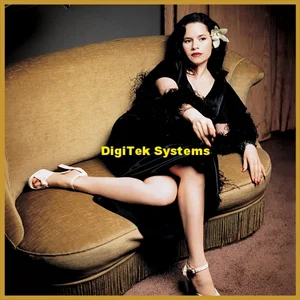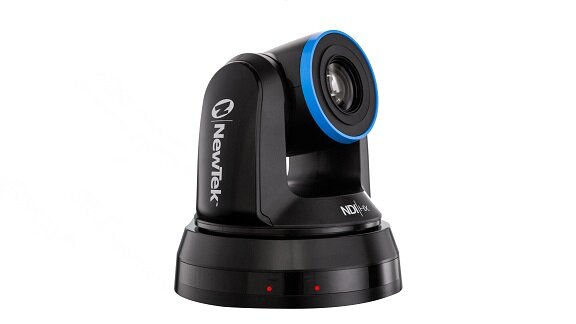Some thoughts about full NDI versus NDIHX and working with the new tricaster tc mini
Several years ago NewTek introduced NDI, or Network Device Interface, their version of IP video to the video production world. With the introduction of the Advanced Edition software for their TriCaster video switcher and streaming systems, NewTek provided a way to perform video production using a 1GB network for sending and receiving video and audio information between devices. Soon after, NewTek released the first NDI PTZ video camera and NDI encoders. Very quickly, many other companies including BirdDog, PTZOptics and NewBlueFX released NDI-enabled hardware and software solutions that worked with the TriCaster and other NDI hardware systems. The list has rapidly grown to include other manufacturers such as Panasonic, Telestream, Magewell and many, many more.
The first NDI devices worked with NDIHX, a more-compressed version of NDI that uses GOP encoding. Full NDI followed which uses I-frame encoding. NDIHX has a little more delay or latency than full NDI but requires less bandwidth. Reportedly full NDI has one frame of video delay but requires more bandwidth than NDIHX, about 125MB per device. Because it is less compressed and has a better color space than NDIHX, NDI is better for archiving and editing applications. When streaming with FaceBook, YouTube or other platforms, working with either NDI or NDIHX is OK and has no impact on streaming. According to NewTek, you can have NDI and NDIHX running on the same network without any problems.
NDI uses no network bandwidth until a connection is created between devices. You can have as many NDI devices on the same network as you want. You can configure NDI to use UniCast or MultiCast transmission methods which greatly affects overall bandwidth usage. Default is UniCast. You must select MultiCast in your network settings.
In general, earlier NDI devices such as NDI encoders and PTZ cameras are NDIHX . . . BirdDog Studio has recently released their Eyes P200 PTZ camera which is a full-NDI device. Panasonic released their AG-CX350 camcorder which is NDIHX. Both the NewTek Spark HDMI and SDI encoders plus the NewTek PTZ1 camera are NDIHX while the NewTek Spark Pro encoder is full NDI.
Panasonic just announced a series of new 4K cameras to be released March 2020 that includes the AG-CX10. The CX10 has a 24x fixed Leica Dicomar zoom lens offering up to a 600mm angle of view, NDI HX support and 10-bit 4K internal recording. Price is reportedly $2,795.00, substantially less than the $3,995.00 AG-CX350. Reportedly, 4K is not yet supported thru NDI-HX on these cameras. Reportedly, 4K is not yet supported through NDI-HX on these cameras.
A useful tip when working with NDIHX cameras is to set the camera to a 60p format because each frame is half the duration of 60i or 30p and reduces overall latency.
NDI requires a 1GB network and cabling to work with. You can use CAT-5 cabling but it has to be CAT-5e (and not plain CAT-5) to work with a 1GB network. If using a new installation go with CAT-6.
To send power to those NDI-enabled PTZ cameras that require it, you will need to work with a PoE+ network. This means you can send a single CAT-6 cable to the camera that sends power to the camera (no local AC outlet needed), send control commands to the camera to pan, tilt and zoom plus send video and audio over the network to be used by your NewTek TriCaster, etc. The new TriCaster TC Mini is PoE, so you will need to provide local power to any PTZ cameras that you use with that system or use inline POE+ power injectors via CAT 5e or CAT6.
NDI is designed to be bidirectional, meaning devices will see each other on the network and can send and receive video and audio information from each other. For example, two TriCasters on the same network with see each other . . . not only their program out but also any and all video sources they are working with. In other words, both TriCasters can share their sources with each other.
SOME TIPS ABOUT WORKING WITH THE NEW TRICASTER TC MINI
1) When working with the system for the first time you will need internet access to register the system with NewTek. You won’t be able to use the TriCaster until you do so. Unlike previous TriCasters which allowed you to enter just the serial number to get the system running for testing purposes (albeit with the NewTek watermark stamp on the output) the system won’t run until you register it with NewTek. While this is a simple process to complete, you want to do this before going live with the system.
2) We also discovered that the two Input Modules included with the TC Mini (technically not Sparks but that is what they look like) won’t work until you sign the EULA (End User License Agreement). Again, easy to do but if you don’t know how or that you have to even do it, very frustrating. Simply click on the Web Page link for each input module as an NDI source and enter Admin for both the username and password. Accept the EULA and the Input Modules will then work.
3) You can use other NDI encoders besides the two 4K HDMI input modules included with the TC Mini. We connected an older NewTek Connect Spark HDMI to the third NDI port on the TC Mini and were able to bring in a third video source that way. We didn’t have to create a network or set an IP address on the Connect Spark HDMI to get it working with the TC Mini. The TC Mini simply found the third NDI device and made it a new video source to switch with. Any NDI encoder made by NewTek, Birddog or Magewell, etc. should work this way.
4) To take a conventional (non-NDI) video signal out of the TC Mini you have a couple of options . . . you can use one of the four mini diplays ports on the TC Mini and add an adapter to take an HDMI signal directly to a projector or monitor (the TC Mini actually ships with one of those). Or . . . you can use a bidirectional NDI encoder/decoder like a BirdDog Studio connected to the TC Mini and send out an SDI or HDMI video signal. That NDI decoder provides a pair of NDI mix outs and can be connected to either of the four NDI ports or the two house Ethernet ports on the TC Mini.
More to come as time permits!
If you have any specific questions about NDI please fill out the form below and send it to us. We will do our best to answer your question(s) and may add it to this overview of NDI.

